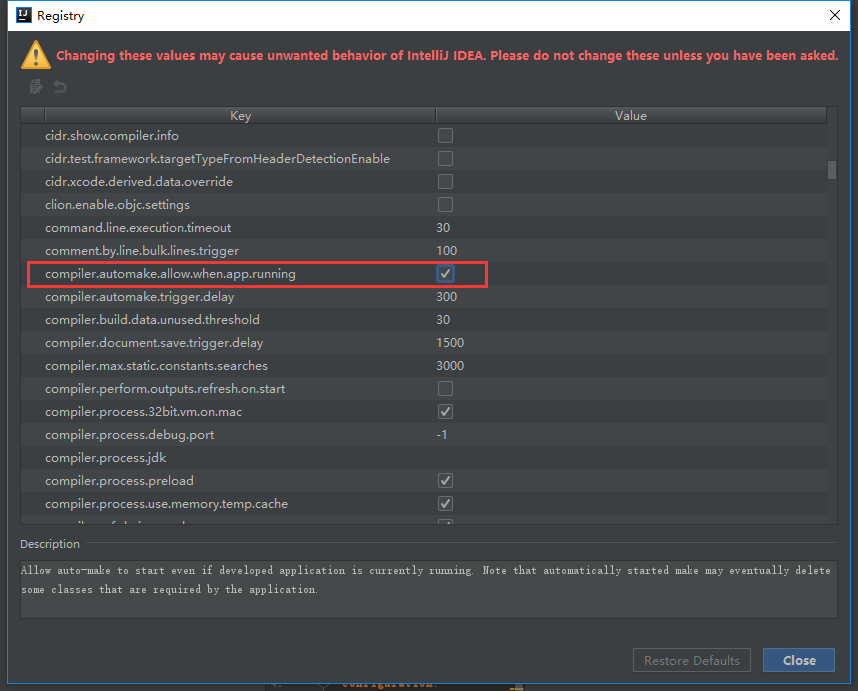

Again add -javaagent:"/path_on_your_disk/hotswap-agent-1.3.0.jar"option, again restart payara server from netbeans.Add -XXaltjvm=dcevm option and click on Save button, restart your payara server from netbeans.remove any -client Or -server option from JVM options list and click save.
Detect jrebel agent download#
To use HotswapAgent with DCEVM while developing applications with NetBeans, the following changes are required:ġ. Check your java version with java -version command and download appropriate DCEVM from Also download hotswap-agent-1.3.0.jar from Ģ. from your terminal run your DCEVM installer jar as an admin, with following command java -jar DCEVM-8u172-installer.jar, NB: DCEVM-8u172-installer.jarcan have different version name based on you java installationģ. The DCEVM installer window will open, select the java installation and click on Install DCEVM as altjvm button, after clicking it will set the Installer altjvm field to yesĤ. Now for Payara integration, copy hotswap-agent-1.3.0.jar, go to your payara server directory on disk, finally paste the jar into/glassfish/domains/domain1/lib/ext/ folder, finally the path would be glassfish/domains/domain1/lib/ext/hotswap-agent-1.3.0.jarĥ. Again for linux user open glassfish/config/nf file into your notepad++ and specify that the AS_JAVAĮnvironment variable points to the Java installation like : AS_JAVA = /path_to_jdk/ If you are using windows, open glassfish/config/asenv.bat file into your notepad++ and specify that the AS_JAVAĮnvironment variable points to the Java installation like this set AS_JAVA=C:\Program Files\Java\jdk1.8.0_171Ħ. Now start your payara server from Netbeans-> Sevices -> Servers -> Payara, After the server has started open your browser, click Configurations -> server-config -> JVM Settings , now click on JVM Options tab and next click Add JVM Options button
Detect jrebel agent code#
In case you have added multiple classes / renamed an existing class/ implemented new interface then goto each individual class and click on Apply code changes button and your code change should be applied with debugger console logs like following:.You will need to click on Apply code changes also in case any of your code changes in those newly added classes wasn't hotswaped In case you have added new class Or packages,You just need to click on Apply code changes button that's beside netbeans debug button.I have found that Hotswap agent only works on debug mode, Remember to debug your project after you have configured hotswap agent ,.If you are currently using jRebel ,uninstall that plugin first.The alternative VM engine is basically a patched version of the standard engine, which improves code hot swap via the debugging interface, without impacting other functions of the JVM.Important Note However, getting the most of HotswapAgent requires installing an alternative DCEVM engine into your JRE installation, which does a much better job in reloading code changes than the standard VM engine in the HotSpot VM. It’s also possible to write custom plugins for any project or even specifically for your application. It essentially scans the classpath to detect the presence of known frameworks and tries to refresh the frameworks after a code or resource change is detected.


Getting started with HotswapAgent HotswapAgent itself is just a java agent, which has to be attached to the application. Then I came across an open source alternative called HotswapAgent, which has worked very well for me for my personal Java EE projects. In this post, I’m going to write up how I got it running in my IDE and Payara Server.
Detect jrebel agent free#
But recently they have stopped providing the free service with personal jRebel account. Many developers know that JRebel can help a lot with updating the code on the fly. And all developers know that restoring the desired state of the application after a fresh restart takes time and is tedious. It's located in the source root.With Java, it’s always necessary to rebuild the source code in bytecode, which can be then safely updated only by restarting the whole application. But I'm not sure if that's JRebel or the JVM hotswapper. It only changes when I manually select Reload Changed Classes. And the class is still the old version in the server. When I edit a class in IDEA and hit save, nothing happens. The server starts showing that JRebel started too however, it doesn't seem to be monitoring anything. I start the web server with JRebel debug mode. I made sure On Frame Deactivation is set to "Do Nothing" I followed the JRebel tutorial and read the manual.


 0 kommentar(er)
0 kommentar(er)
